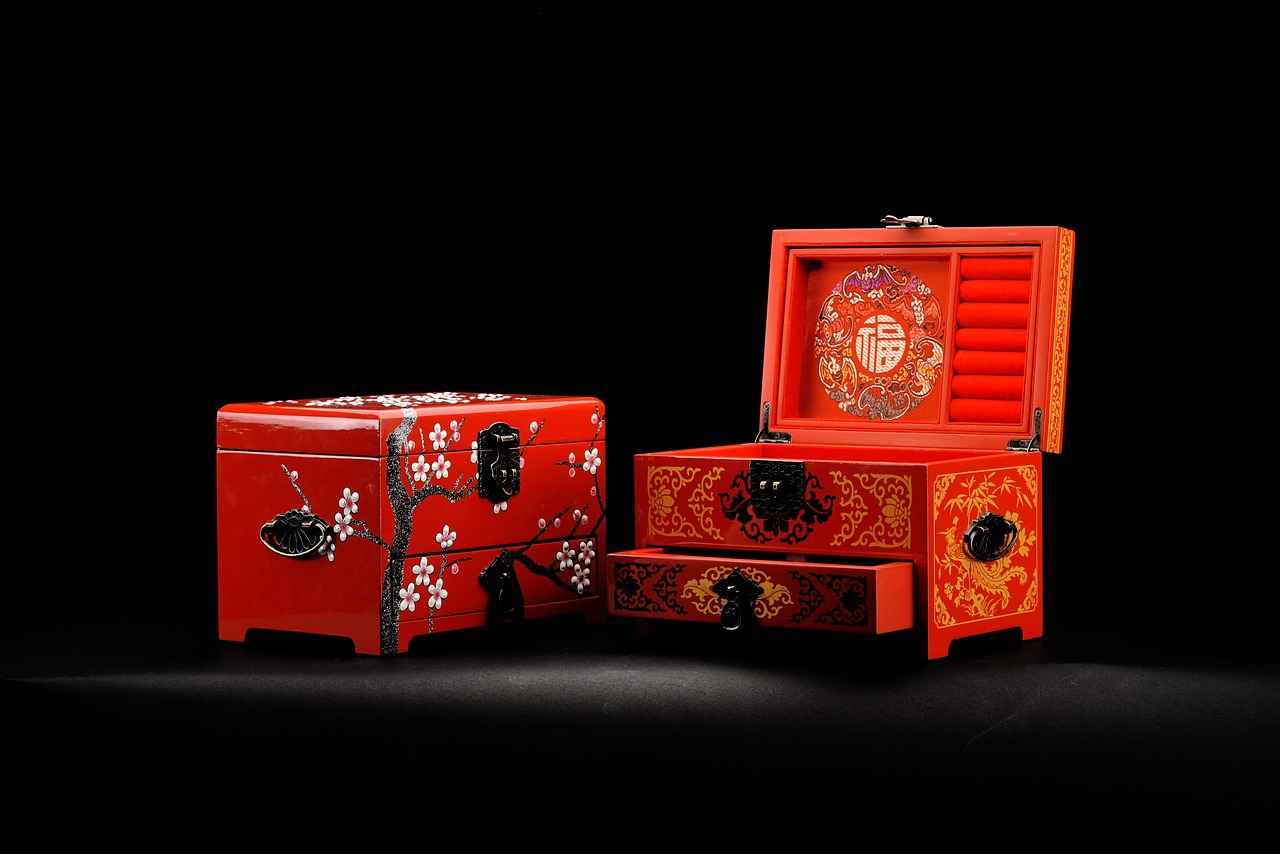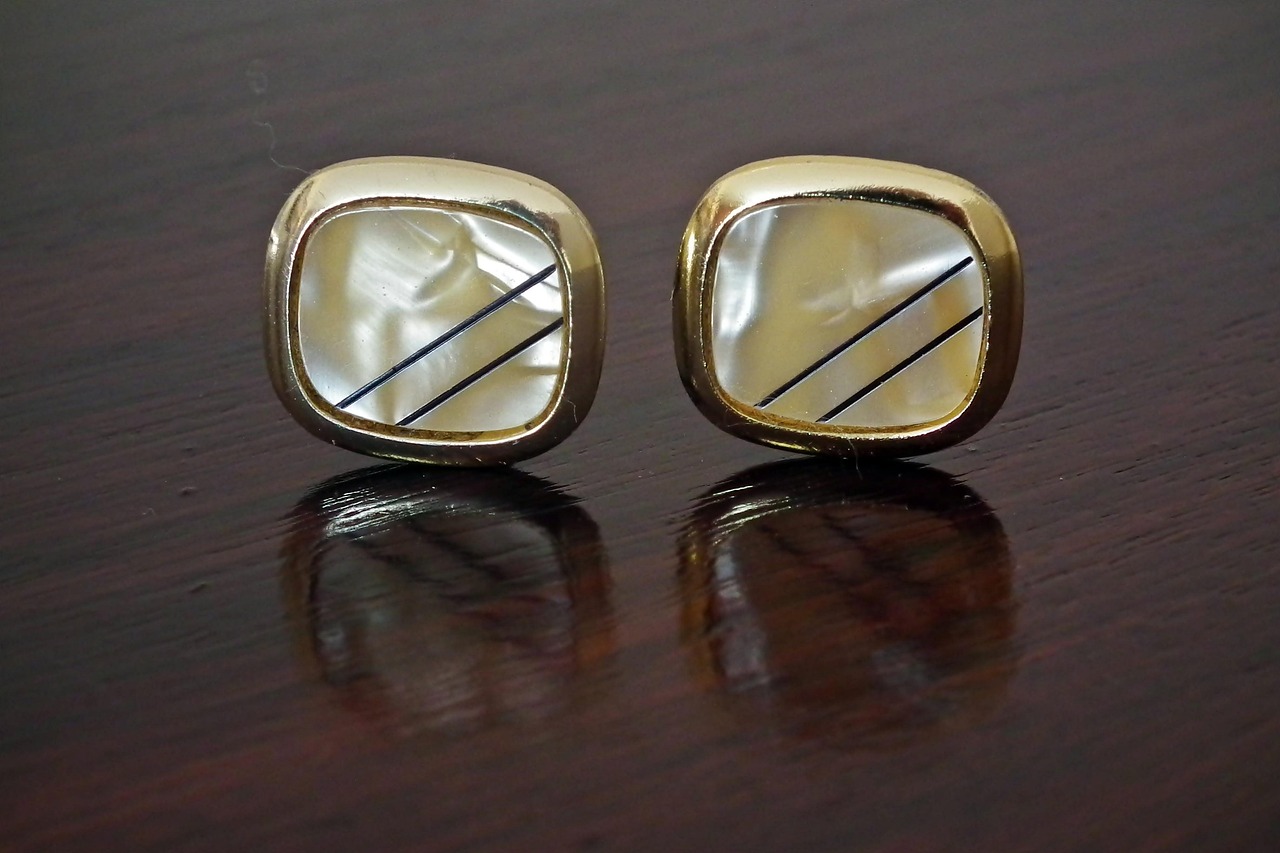The jewelry industry is undergoing a significant transformation in 2024, largely driven by the rapid advancements in artificial intelligence (AI). This article delves into the various ways AI is reshaping the industry, highlighting key innovations, emerging trends, and how businesses are adapting to leverage this powerful technology.
AI is revolutionizing jewelry design by introducing advanced algorithms that allow for the creation of unique and intricate pieces. Designers now have access to sophisticated design software that enables them to explore creative boundaries that were previously unimaginable. These innovations not only enhance artistic expression but also streamline the design process, making it more efficient.
In retail, AI technologies are personalizing the shopping experience. Through data analytics and machine learning, retailers can recommend products that align with individual customer preferences and styles. This level of personalization fosters a deeper connection between brands and consumers, ultimately leading to increased customer loyalty.
Virtual try-on technology, powered by AI, is a game-changer in the online shopping experience. Customers can visualize how jewelry pieces will look on them before making a purchase, significantly enhancing their confidence in buying decisions and reducing return rates. This technology not only improves customer satisfaction but also increases conversion rates for retailers.
Augmented reality (AR) takes the virtual try-on experience to the next level by overlaying digital jewelry on live images. This immersive shopping environment engages customers more effectively, allowing them to interact with products in a more meaningful way. The combination of AR and AI creates a richer shopping experience that can lead to higher sales.
AI-driven personalization offers numerous benefits, including tailored recommendations based on user behavior. This leads to higher customer satisfaction as shoppers find products that truly resonate with their tastes. Moreover, targeted marketing strategies powered by AI can drive increased sales, making it a win-win for both consumers and businesses.
AI is optimizing manufacturing processes by improving efficiency and accuracy. By reducing waste and enabling faster production times, AI plays a crucial role in helping businesses remain competitive in a fast-paced market. These enhancements not only lower costs but also contribute to a more sustainable production model.
AI tools are reshaping marketing strategies by analyzing consumer data and predicting trends. This allows brands to create targeted advertising campaigns that resonate with specific audiences. As a result, businesses can allocate their marketing budgets more effectively, maximizing their return on investment.
Predictive analytics, powered by AI, enables businesses to forecast jewelry trends and consumer preferences. By staying ahead of the competition, brands can adapt their offerings to meet changing demands, ensuring they remain relevant in a dynamic market.
The use of AI in marketing raises important ethical questions regarding data privacy, consumer manipulation, and the transparency of algorithms used in targeted advertising. It is essential for businesses to navigate these issues responsibly to maintain consumer trust.
AI technologies are promoting sustainability by optimizing resource use and reducing waste in production. By enabling ethical sourcing practices, AI appeals to environmentally conscious consumers, making sustainability a key selling point for brands.
AI can track and verify the sourcing of materials, ensuring that diamonds and other gemstones are conflict-free. This transparency is increasingly important to consumers, who are more likely to support brands that prioritize ethical sourcing.
AI-driven systems provide detailed tracking of the supply chain, offering consumers transparency about the origins of their jewelry. This level of accountability reinforces brand trust and loyalty among consumers.
As AI technology continues to evolve, its applications in the jewelry industry are expected to expand. From innovative designs to enhanced customer experiences and sustainable practices, AI is set to redefine the market landscape in the coming years.

What Are the Latest AI Innovations in Jewelry Design?
In recent years, the jewelry industry has witnessed a remarkable transformation fueled by the advent of artificial intelligence (AI). This innovative technology is not only reshaping design processes but also enhancing creativity and efficiency in ways previously unimaginable. As we delve into 2024, it becomes evident that AI innovations are at the forefront of jewelry design, enabling artisans to create unique, intricate pieces that push the boundaries of traditional craftsmanship.
AI is revolutionizing jewelry design by enabling unique and intricate creations through advanced algorithms and design software. These tools empower designers to explore new realms of creativity, allowing them to generate complex patterns and shapes that were once limited by manual techniques. For instance, AI-driven software can analyze existing designs and suggest modifications, enhancing the creative process. This capability not only saves time but also opens new avenues for artistic expression.
Moreover, AI algorithms can simulate various materials and finishes, enabling designers to visualize how different elements will interact before production. This virtual prototyping significantly reduces the need for physical samples, leading to a more sustainable approach in the industry. By minimizing waste and optimizing resource use, AI is aligning with the growing demand for environmentally friendly practices.
Another exciting development is the integration of machine learning in the design process. This technology allows systems to learn from past designs and consumer preferences, enabling jewelry designers to create pieces that resonate with current trends. By analyzing vast amounts of data, AI can predict what styles will be popular, giving designers a competitive edge in the market.
| AI Innovations | Description |
|---|---|
| Advanced Design Software | Enables intricate designs through algorithm-driven tools. |
| Virtual Prototyping | Simulates materials and finishes for better visualization. |
| Machine Learning | Analyzes trends and consumer preferences for targeted design. |
Furthermore, AI is facilitating collaboration among designers, allowing them to share insights and inspirations globally. Online platforms powered by AI can connect artisans from different backgrounds, fostering a rich exchange of ideas that can lead to groundbreaking designs. This collaborative environment not only enhances creativity but also promotes diversity in jewelry design.
As we look ahead, the future of jewelry design appears bright, with AI continuing to play a pivotal role. The integration of augmented reality (AR) with AI is set to further enhance the design process, enabling designers to visualize their creations in real-world settings. This immersive experience not only aids in the design phase but also enriches the customer experience, allowing potential buyers to engage with the jewelry in innovative ways.
In conclusion, the latest AI innovations are not just tools; they are catalysts for change in the jewelry industry. By embracing these technologies, designers can push the limits of creativity, streamline production processes, and align with sustainable practices. As we move forward, it is clear that AI will continue to redefine the landscape of jewelry design, making it an exciting time for both designers and consumers alike.

How Is AI Enhancing Customer Experience in Jewelry Retail?
The jewelry retail industry is undergoing a significant transformation, thanks to the integration of artificial intelligence (AI). As consumer expectations evolve, businesses are leveraging AI technologies to create a more personalized and engaging shopping experience. This article delves into how AI is enhancing customer experiences in jewelry retail, focusing on personalization, virtual try-ons, and customer insights.
AI technologies are revolutionizing the way customers shop for jewelry by utilizing data analytics and machine learning. These technologies analyze vast amounts of data to understand individual customer preferences, styles, and purchasing behaviors. By doing so, retailers can recommend products that align with each customer’s unique taste.
- Tailored Recommendations: AI algorithms can suggest items based on previous purchases, browsing history, and even social media activity. This level of personalization increases the chances of conversion and enhances customer satisfaction.
- Dynamic Pricing: AI can adjust prices in real-time based on demand and customer behavior, ensuring competitive pricing that appeals to targeted audiences.
One of the most exciting applications of AI in jewelry retail is virtual try-on technology. This innovative feature allows customers to visualize how different pieces of jewelry will look on them without having to visit a physical store.
- Enhanced Engagement: By allowing customers to virtually try on jewelry using augmented reality (AR), retailers can significantly enhance the online shopping experience, making it more interactive and engaging.
- Reduced Return Rates: When customers can see how a piece of jewelry looks on them, they are more likely to make informed purchasing decisions, which can lead to lower return rates.
AI is not just about recommendations; it also plays a crucial role in analyzing customer insights. By examining patterns in consumer behavior, AI can help retailers understand market trends and customer preferences more effectively.
- Predictive Analytics: AI tools can forecast future buying trends, allowing retailers to stock inventory that meets anticipated demand.
- Sentiment Analysis: By analyzing customer reviews and feedback, AI can gauge customer sentiment towards specific products, helping retailers make informed decisions about marketing and inventory.
The benefits of AI-driven personalization in jewelry retail are manifold:
- Increased Customer Satisfaction: Tailoring experiences to individual preferences leads to higher satisfaction levels and fosters brand loyalty.
- Higher Conversion Rates: Personalized recommendations can significantly increase conversion rates, as customers are more likely to purchase items that resonate with their tastes.
As the jewelry industry continues to embrace AI technologies, the customer experience is set to become even more personalized and engaging. Retailers who leverage these innovations will not only meet the evolving demands of consumers but also gain a competitive edge in the market.
What Role Does Virtual Try-On Technology Play?
In the ever-evolving landscape of online shopping, virtual try-on technology has emerged as a game-changer, particularly in the jewelry sector. This innovative technology, driven by artificial intelligence (AI), allows customers to visualize how various jewelry pieces will look on them without ever leaving their homes. By providing a realistic representation of products, virtual try-on technology significantly enhances the online shopping experience, making it more interactive and personalized.
At its core, virtual try-on technology utilizes augmented reality (AR) and sophisticated algorithms to overlay digital representations of jewelry onto live images of users. By using a smartphone or computer camera, customers can see how rings, necklaces, earrings, and bracelets will appear on them in real-time. This technology is not just about aesthetics; it also incorporates size and fit considerations, ensuring that customers can make informed purchasing decisions.
- Enhanced Customer Engagement: By allowing customers to interact with products virtually, brands can create a more engaging shopping experience.
- Reduced Return Rates: One of the significant challenges of online shopping is the high return rates due to items not meeting customer expectations. Virtual try-on technology helps mitigate this issue by providing a realistic preview of the products.
- Increased Sales: When customers can visualize how jewelry will look on them, they are more likely to complete their purchases, leading to higher conversion rates.
- Personalized Recommendations: Some virtual try-on systems leverage AI to suggest pieces based on previous purchases or browsing history, further enhancing the shopping experience.
Leading jewelry brands are increasingly adopting virtual try-on technology to stay competitive in a crowded market. By integrating this feature into their websites and mobile apps, they are providing customers with a unique shopping experience that combines convenience with personalization. For instance, brands like Blue Nile and Jared have incorporated this technology, allowing customers to explore their extensive collections in an immersive way.
Despite its many advantages, virtual try-on technology is not without challenges. Technical limitations can affect the accuracy of the virtual representations, leading to customer dissatisfaction if the final product does not match their expectations. Additionally, the initial cost of implementing this technology can be a barrier for smaller jewelry businesses. However, as technology continues to advance and become more accessible, these challenges are likely to diminish.
Looking ahead, the future of virtual try-on technology in the jewelry industry appears promising. As AI and AR technologies continue to evolve, we can expect even more realistic and interactive experiences. Innovations such as 3D modeling and machine learning will further enhance the accuracy and personalization of virtual try-ons, making them an essential tool for jewelry retailers. This technology not only caters to the growing demand for online shopping but also aligns with consumer preferences for convenience and personalization.
In conclusion, virtual try-on technology is revolutionizing the way customers shop for jewelry online. By enhancing engagement, reducing return rates, and providing personalized experiences, this technology is shaping the future of the jewelry industry. As more brands adopt these innovations, we can anticipate a more interactive and satisfying shopping experience that meets the evolving needs of consumers.
How Does Augmented Reality Integrate with AI?
Augmented Reality (AR) is revolutionizing the way consumers engage with jewelry, particularly in the realm of online shopping. By seamlessly integrating with artificial intelligence (AI), AR enhances the virtual try-on experience, allowing customers to visualize how various jewelry pieces will look on them in real time. This innovative technology overlays digital representations of jewelry onto live images captured by the user’s device, creating a highly immersive shopping environment.
The integration of AR in jewelry retail addresses several challenges faced by online shoppers. Traditionally, customers had to rely on static images or descriptions, which often led to uncertainty about how a piece would actually look when worn. With AR, shoppers can engage in a more interactive experience. They can use their smartphones or tablets to see how a ring, necklace, or pair of earrings would complement their personal style and appearance.
- Enhanced Engagement: AR captivates customers by providing a unique and interactive experience, encouraging them to spend more time exploring products.
- Increased Confidence: By visualizing products in real-life scenarios, customers feel more confident in their purchasing decisions, leading to lower return rates.
- Personalization: AR applications can be tailored to individual preferences, recommending styles and pieces that align with a customer’s taste and past purchases.
AI plays a crucial role in optimizing the functionality of AR in jewelry retail. Through machine learning algorithms, AI can analyze user data to improve the accuracy of virtual representations. This ensures that the jewelry appears realistic and is scaled correctly based on the user’s unique features. Furthermore, AI can personalize the AR experience by suggesting items based on the user’s browsing history and preferences, making the shopping experience even more tailored.
The backbone of AR technology in jewelry retail includes advanced computer vision, 3D modeling, and real-time rendering. These technologies enable the seamless overlay of digital images onto live video feeds, allowing for a smooth and realistic interaction. As smartphones and tablets become more powerful, the quality of AR experiences continues to improve, making them more accessible to a wider audience.
Leading jewelry brands are increasingly adopting AR technology as part of their marketing strategies. By offering virtual try-on features, they not only enhance the customer experience but also differentiate themselves in a competitive market. Campaigns that incorporate AR can lead to higher engagement rates on social media platforms, where users share their experiences and encourage others to try the technology.
As AR technology continues to evolve, its applications in the jewelry industry are expected to expand. Future developments may include even more sophisticated personalization features, integration with social media platforms, and enhanced collaboration with influencers. Brands that leverage these advancements will likely see increased customer loyalty and higher conversion rates.
In conclusion, the integration of augmented reality with artificial intelligence is transforming the jewelry shopping experience. By creating an immersive and personalized environment, AR not only enhances customer engagement but also fosters greater confidence in purchasing decisions. As technology continues to advance, the jewelry industry is poised for significant growth and innovation.
What Are the Benefits of AI-Driven Personalization?
In the rapidly evolving landscape of the jewelry industry, AI-driven personalization has emerged as a game-changer. This innovative approach tailors recommendations based on individual user behavior, enhancing the overall shopping experience. By harnessing the power of data analytics and machine learning, businesses can create customized experiences that resonate with their customers, leading to significant benefits.
AI-driven personalization allows retailers to analyze customer data and preferences, enabling them to offer highly relevant product recommendations. This level of customization not only improves customer satisfaction but also fosters a deeper connection between the brand and the consumer. When customers receive suggestions that align with their tastes and preferences, they are more likely to engage with the brand, leading to increased loyalty.
By implementing AI-driven personalization, businesses can see a noticeable increase in sales. When customers are presented with products that match their interests, they are more inclined to make a purchase. According to recent studies, personalized recommendations can boost conversion rates by as much as 30%. This targeted marketing strategy not only drives sales but also enhances the overall shopping experience, making it more enjoyable for the consumer.
AI-driven personalization equips marketers with the tools to create targeted advertising campaigns that resonate with specific audiences. By analyzing consumer behavior, preferences, and trends, businesses can craft messages that speak directly to their target market. This level of precision in marketing not only improves engagement rates but also maximizes the return on investment (ROI) for advertising efforts.
Data is at the heart of AI-driven personalization. By collecting and analyzing vast amounts of data from various sources, including browsing history, purchase behavior, and customer feedback, businesses can gain valuable insights into consumer preferences. This data-driven approach allows for continuous optimization of recommendations, ensuring that customers receive the most relevant suggestions every time they shop.
One of the most significant advantages of AI-driven personalization is its ability to adapt to changing consumer preferences. As trends evolve and customer tastes shift, AI algorithms can quickly analyze new data and adjust recommendations accordingly. This adaptability ensures that brands remain relevant and can respond to the dynamic nature of consumer behavior.
While the benefits of AI-driven personalization are substantial, there are challenges that businesses must navigate. Ensuring data privacy and security is paramount, as consumers are increasingly concerned about how their information is used. Additionally, implementing AI technology can require significant investment and expertise. However, the long-term benefits often outweigh these initial hurdles, making it a worthwhile endeavor for many jewelry retailers.
To gauge the effectiveness of AI-driven personalization, businesses should track key performance indicators (KPIs) such as conversion rates, customer retention rates, and average order value. By analyzing these metrics, retailers can gain insights into how well their personalization strategies are performing and make necessary adjustments to improve outcomes.
In conclusion, AI-driven personalization offers a multitude of benefits for the jewelry industry, enhancing customer satisfaction, boosting sales, and revolutionizing marketing strategies. As technology continues to advance, businesses that embrace this innovative approach will likely find themselves at a competitive advantage, ready to meet the evolving demands of their customers.
How Is AI Streamlining Jewelry Manufacturing Processes?
Artificial Intelligence (AI) has emerged as a game-changer in the jewelry manufacturing sector, driving significant transformations in how products are designed, produced, and delivered. As the industry continues to evolve, the integration of AI technologies is becoming increasingly vital for businesses aiming to remain competitive in a dynamic market.
One of the most notable advantages of AI in jewelry manufacturing is its ability to enhance efficiency and accuracy. Traditional manufacturing processes often involve manual labor, which can lead to human errors and inconsistencies. By utilizing AI-driven machines, manufacturers can automate tasks such as cutting, polishing, and assembling jewelry pieces. This not only speeds up production times but also ensures that each piece meets precise specifications, minimizing the risk of defects.
AI technologies contribute to waste reduction by optimizing resource use. Advanced algorithms analyze production data to identify inefficiencies and suggest improvements. For example, AI can determine the best way to cut materials to maximize yield, thereby reducing excess waste. This is particularly important in an industry where precious materials are often involved, as it helps to lower costs and promote sustainability.
In a competitive market, speed is crucial. AI streamlines the entire production process, from design to delivery. With the help of AI, manufacturers can quickly iterate on designs, using software that generates multiple variations based on initial concepts. This rapid prototyping allows designers to test and refine their ideas without the lengthy delays associated with traditional methods. Furthermore, AI can predict production bottlenecks and suggest alternative workflows, ensuring that timelines are met.
AI also plays a significant role in enabling customization and personalization in jewelry manufacturing. With AI, manufacturers can analyze customer preferences and trends to create bespoke pieces tailored to individual tastes. This level of personalization not only enhances customer satisfaction but also fosters brand loyalty, as consumers are more likely to return for unique offerings that resonate with their personal styles.
Quality control is essential in the jewelry industry, where the value of items can be substantial. AI systems can be employed to monitor production in real-time, using machine learning algorithms to detect anomalies or deviations from quality standards. This proactive approach to quality assurance ensures that only the finest products reach the market, thereby protecting the brand’s reputation and customer trust.
AI is also transforming supply chain management in jewelry manufacturing. By analyzing data from various sources, AI can predict demand trends, optimize inventory levels, and enhance logistics. This results in a more responsive supply chain that can adapt to market changes swiftly, reducing lead times and improving overall operational efficiency.
In summary, AI is revolutionizing jewelry manufacturing by streamlining processes, enhancing efficiency, and enabling customization. As the technology continues to advance, its impact on the industry will likely grow, paving the way for innovative practices that not only meet consumer demands but also promote sustainability. By embracing AI, jewelry manufacturers can position themselves for success in an increasingly competitive landscape.

What Impact Does AI Have on Jewelry Marketing Strategies?
In recent years, artificial intelligence (AI) has emerged as a game-changer in various industries, and the jewelry sector is no exception. As businesses strive to connect with consumers more effectively, understanding the impact of AI on marketing strategies has become crucial. This article delves into how AI tools are reshaping marketing approaches in the jewelry industry, enhancing customer engagement, and improving overall business performance.
AI technologies are revolutionizing the way jewelry companies analyze consumer data. By utilizing advanced algorithms, businesses can gather insights from vast amounts of data, allowing them to understand consumer preferences and behaviors better. This data-driven approach enables brands to tailor their marketing strategies, ensuring they resonate with their target audiences.
Predictive analytics, powered by AI, is becoming increasingly important in shaping jewelry marketing strategies. By analyzing historical data and identifying patterns, AI can forecast future trends and consumer preferences. This capability allows brands to stay ahead of the competition by adapting their product offerings and marketing campaigns in real-time. For instance, if a particular style of jewelry is predicted to gain popularity, companies can ramp up production and marketing efforts accordingly.
AI tools enable targeted advertising campaigns that are more effective and efficient. By leveraging machine learning, businesses can segment their audience based on various factors such as demographics, purchase history, and online behavior. This segmentation allows for personalized advertisements that resonate with specific groups, leading to higher engagement rates and conversion levels. For example, a jewelry brand may target young adults with ads featuring trendy pieces, while promoting timeless designs to an older audience.
Personalization is a key benefit of AI in jewelry marketing. By analyzing individual customer data, AI can recommend products that align with a customer’s unique style and preferences. This level of personalization not only enhances the shopping experience but also fosters customer loyalty. Brands that utilize AI-driven personalization often see increased sales and improved customer satisfaction.
AI is also instrumental in enhancing customer engagement through chatbots and virtual assistants. These AI-driven tools offer real-time assistance, answering customer inquiries and providing recommendations based on user preferences. This immediate support helps build trust and keeps customers engaged throughout their shopping journey, ultimately leading to higher conversion rates.
While AI offers numerous advantages, it also raises ethical concerns, particularly regarding data privacy and consumer manipulation. Jewelry brands must navigate these challenges carefully, ensuring that they use consumer data responsibly and transparently. Implementing clear privacy policies and obtaining explicit consent for data usage can help build trust with consumers while leveraging AI effectively.
The future of jewelry marketing is undoubtedly intertwined with AI technology. As advancements continue, we can expect even more innovative applications that will enhance marketing strategies. From improved data analytics to more sophisticated personalization techniques, AI will play a vital role in helping jewelry brands connect with consumers in meaningful ways.
In conclusion, AI is fundamentally transforming marketing strategies in the jewelry industry. By harnessing the power of data analysis, predictive analytics, and personalized advertising, businesses can create targeted campaigns that resonate with consumers. As the industry evolves, embracing AI will be essential for jewelry brands aiming to thrive in a competitive market.
How Can Predictive Analytics Shape Future Trends?
Predictive analytics, driven by the power of artificial intelligence, is revolutionizing the way businesses in the jewelry industry approach market trends and consumer behavior. By leveraging vast amounts of data, companies can now forecast jewelry trends and consumer preferences with remarkable accuracy. This capability not only helps brands to stay ahead of the competition but also enables them to adapt their offerings in real time, ensuring they meet the evolving desires of their customers.
In today’s fast-paced market, understanding consumer preferences is crucial. Predictive analytics utilizes historical data, social media trends, and purchasing patterns to identify emerging trends before they become mainstream. For instance, if data indicates a rising interest in sustainable jewelry made from recycled materials, brands can pivot their marketing strategies and product lines to cater to this demand. This proactive approach reduces the risk of overproduction and helps businesses align their inventory with consumer desires.
Moreover, predictive analytics enhances customer engagement by providing personalized experiences. By analyzing individual shopping behaviors, brands can offer tailored recommendations that resonate with specific customers. This level of personalization not only increases customer satisfaction but also drives sales, as consumers are more likely to purchase items that align closely with their preferences.
Another significant aspect of predictive analytics is its ability to optimize pricing strategies. By analyzing market trends and consumer demand, businesses can adjust their pricing dynamically, ensuring competitiveness without sacrificing profit margins. This agility is vital in a market where consumer preferences can shift rapidly.
Furthermore, predictive analytics plays a crucial role in inventory management. By forecasting demand accurately, companies can minimize excess stock and reduce waste, leading to more sustainable practices. This not only benefits the environment but also enhances the brand’s reputation among eco-conscious consumers.
The integration of AI-driven predictive analytics into marketing strategies allows businesses to create more effective campaigns. By understanding which demographics are more likely to engage with specific types of jewelry, brands can target their advertising efforts more efficiently, ensuring that marketing budgets are spent wisely.
As we look towards the future, the role of predictive analytics in the jewelry industry will only grow. With advancements in machine learning and data processing, brands will have access to even deeper insights into consumer behavior. This evolution will foster a more responsive and adaptive market, where brands can innovate continuously based on real-time data.
In conclusion, the impact of predictive analytics on the jewelry industry is profound. By enabling businesses to forecast trends and consumer preferences accurately, it empowers them to stay competitive and relevant in an ever-changing landscape. As technology continues to advance, the potential for predictive analytics to shape the future of the jewelry industry is limitless, paving the way for more personalized, efficient, and sustainable practices.
What Are the Ethical Considerations of AI in Jewelry Marketing?
The integration of artificial intelligence (AI) in the jewelry marketing sector has brought about remarkable advancements, but it also raises significant ethical concerns. As businesses increasingly rely on AI to enhance marketing strategies, it is crucial to examine the implications of its use, particularly regarding data privacy, consumer manipulation, and the transparency of algorithms.
One of the most pressing ethical issues surrounding AI in jewelry marketing is data privacy. With AI systems collecting vast amounts of consumer data to tailor marketing efforts, there is a fine line between personalized marketing and intrusive surveillance. Consumers often remain unaware of how their data is collected, stored, and used, leading to a potential erosion of trust. Businesses must prioritize robust data protection measures and maintain transparency about their data practices to mitigate these concerns.
AI algorithms can analyze consumer behavior and preferences to create highly targeted advertising campaigns. While this can enhance customer experience, it also raises ethical questions about manipulation. Are consumers being subtly coerced into making purchases they may not truly want? The risk of fostering dependency on targeted ads can lead to ethical dilemmas, as companies must balance effective marketing with the responsibility of respecting consumer autonomy. It is essential for businesses to adopt ethical guidelines that prevent the exploitation of consumer data.
The algorithms that drive AI marketing strategies are often complex and opaque, making it difficult for consumers to understand how decisions are made. This lack of transparency can breed skepticism and distrust among consumers. Companies should strive to create more transparent AI systems by providing clear explanations of how algorithms function and the criteria used for targeting advertisements. By fostering an open dialogue about AI practices, businesses can enhance consumer confidence and loyalty.
- Implement Data Protection Policies: Establish clear protocols for data collection and usage, ensuring consumer information is handled responsibly.
- Promote Consumer Education: Inform consumers about how AI impacts their shopping experience and encourage them to make informed choices.
- Adopt Ethical Marketing Guidelines: Develop standards that prioritize consumer welfare and autonomy in marketing practices.
- Enhance Algorithm Transparency: Offer insights into how AI algorithms operate and the rationale behind targeted advertising.
In conclusion, while AI has the potential to revolutionize marketing in the jewelry industry, it is crucial for companies to address the ethical considerations that arise from its use. By prioritizing data privacy, preventing consumer manipulation, and enhancing algorithm transparency, businesses can foster a more ethical and trustworthy marketing environment. The future of AI in jewelry marketing will depend on the industry’s ability to navigate these challenges responsibly.

How Is AI Influencing Sustainable Practices in the Jewelry Industry?
As the jewelry industry evolves, artificial intelligence (AI) is emerging as a powerful force for promoting sustainability. In this article, we will explore how AI technologies are reshaping sustainable practices in the jewelry sector, focusing on resource optimization, waste reduction, and ethical sourcing.
AI technologies are revolutionizing the way resources are utilized in jewelry production. By employing advanced algorithms, manufacturers can accurately forecast demand and adjust their production schedules accordingly. This optimization leads to a significant reduction in excess inventory and minimizes the risk of overproduction, which is a common issue in the jewelry industry.
In addition to optimizing resource use, AI plays a crucial role in waste reduction. Through predictive analytics, manufacturers can analyze past production data to identify patterns and inefficiencies. This insight allows them to refine their processes, ensuring that materials are used more efficiently and that scrap waste is minimized. For example, AI-driven systems can suggest the most effective cutting patterns for gemstones, reducing leftover material and thereby decreasing waste.
Ethical sourcing has become a significant concern for consumers, and AI is helping to address this issue. By utilizing blockchain technology and AI algorithms, companies can trace the origins of their materials, ensuring that they are sourced responsibly. This transparency appeals to environmentally conscious consumers who prioritize ethical practices when making purchasing decisions.
AI can track and verify the sourcing of materials, ensuring that diamonds and other gemstones are conflict-free and ethically obtained. This capability is increasingly important to consumers today, who are more aware of the social and environmental implications of their purchases. By leveraging AI, brands can provide assurances that their products do not contribute to human rights abuses or environmental degradation.
Traceability is a key component of sustainable practices, and AI-driven systems can provide detailed tracking of the supply chain. This capability offers consumers transparency about the origins of their jewelry, reinforcing brand trust. With AI, businesses can create digital records that document each step of the supply chain, from the mine to the retail store, ensuring that customers are informed about the journey of their products.
- Enhanced Efficiency: AI technologies streamline production processes, leading to faster turnaround times and reduced costs.
- Consumer Trust: Transparency in sourcing and production fosters trust between brands and consumers.
- Eco-Friendly Practices: By minimizing waste and optimizing resource use, AI contributes to environmentally sustainable practices.
As AI technology continues to evolve, its applications in promoting sustainability in the jewelry industry are expected to expand. Companies that embrace these innovations will not only improve their operational efficiency but will also cater to the growing demand for sustainable products. By prioritizing ethical sourcing and transparency, the jewelry industry can align itself with the values of modern consumers, ultimately leading to a more sustainable future.
What Role Does AI Play in Conflict-Free Sourcing?
In recent years, the jewelry industry has faced increasing scrutiny regarding the ethical sourcing of materials. With consumers becoming more aware of the implications behind their purchases, the demand for conflict-free and ethically sourced gemstones has surged. This is where artificial intelligence (AI) plays a pivotal role, revolutionizing how the industry approaches sourcing and transparency.
AI technologies are equipped to track and verify the origins of gemstones, ensuring that they are sourced from conflict-free zones. By utilizing advanced algorithms, AI can analyze vast amounts of data related to the supply chain, identifying the pathways through which materials travel. This capability not only enhances the verification process but also builds trust with consumers who prioritize ethical considerations in their purchases.
- Blockchain Technology: AI often works in conjunction with blockchain to create a transparent ledger of transactions. This technology allows for a secure and immutable record of every step in the supply chain, from mine to market.
- Machine Learning: Machine learning algorithms can predict and identify potential risks in the sourcing process, alerting companies to any discrepancies that might indicate unethical practices.
- Data Analytics: By analyzing consumer data and market trends, AI can help businesses align their sourcing strategies with consumer demand for ethical products.
Today’s consumers are increasingly demanding transparency from brands. They want to know the origins of their jewelry, and AI can provide this information in an accessible manner. By offering detailed reports on the sourcing of materials, companies can foster a sense of trust and loyalty among their customers.
Utilizing AI for conflict-free sourcing not only meets consumer demand but also enhances brand reputation. Companies that adopt AI-driven verification processes can market themselves as leaders in ethical sourcing. This proactive approach not only attracts ethically-minded consumers but also sets a standard within the industry, encouraging others to follow suit.
While the benefits of AI in conflict-free sourcing are significant, there are challenges to consider. Integration of AI technology requires investment in infrastructure and training. Additionally, the accuracy of AI systems depends on the quality of data input. Companies must ensure that their data is reliable and comprehensive to avoid misleading consumers.
The future of AI in conflict-free sourcing looks promising. As technology evolves, we can expect more sophisticated systems that enhance traceability and verification processes. Innovations such as AI-driven apps may allow consumers to scan jewelry pieces for instant information about their sourcing, further bridging the gap between brands and consumers.
In conclusion, AI is playing a transformative role in the jewelry industry, particularly in the realm of conflict-free sourcing. By leveraging technology to ensure ethical practices, brands can meet consumer demands for transparency and sustainability, ultimately leading to a more responsible and trustworthy market.
How Can AI Assist in Traceability and Transparency?
In the evolving landscape of the jewelry industry, traceability and transparency have become paramount concerns for consumers and brands alike. As customers increasingly demand to know the origins of their jewelry, AI-driven systems have emerged as powerful tools to address these needs. By leveraging advanced algorithms and data analytics, these systems can meticulously track the journey of each piece, from raw materials to the final product.
What Is Supply Chain Transparency?
Supply chain transparency refers to the visibility of the entire process involved in producing and delivering a product. In the context of jewelry, this means that consumers can access detailed information about where their gemstones and metals come from. AI plays a crucial role in enhancing this transparency by providing real-time data and insights.
How Does AI Improve Supply Chain Tracking?
- Data Integration: AI systems can integrate data from various sources, including suppliers, manufacturers, and logistics providers, to create a comprehensive view of the supply chain.
- Blockchain Technology: Many AI applications utilize blockchain to ensure that every transaction and movement of materials is recorded securely, making it impossible to alter the history of a product.
- Predictive Analytics: AI can analyze historical data to predict potential issues in the supply chain, allowing brands to address problems before they escalate.
Why Is Transparency Important for Consumers?
For today’s consumers, especially those who prioritize ethical consumption, understanding the origins of their jewelry is crucial. AI-driven transparency not only builds trust between brands and consumers but also empowers buyers to make informed decisions. Knowing that a piece is sourced ethically can significantly influence purchasing choices.
How Do Brands Benefit from Enhanced Transparency?
Jewelry brands that embrace AI-driven traceability can enjoy a competitive edge. By providing clear information about sourcing and production practices, they can:
- Enhance brand loyalty by aligning with consumer values.
- Reduce the risk of negative publicity associated with unethical sourcing.
- Attract a broader audience, particularly millennials and Gen Z, who are more likely to support brands that prioritize transparency.
Case Studies of AI in Action
Several leading jewelry brands have begun implementing AI technologies to enhance traceability:
- De Beers: This company uses blockchain to track the provenance of diamonds, ensuring they are conflict-free and ethically sourced.
- Brilliant Earth: By employing AI-driven systems, they provide customers with detailed information about the sourcing of their materials, reinforcing their commitment to ethical practices.
As the jewelry industry continues to adapt to changing consumer demands, the role of AI in ensuring transparency and traceability will only grow. By providing detailed insights into the supply chain, AI not only fosters trust but also encourages ethical practices that resonate with today’s conscientious consumers.
In conclusion, the integration of AI in the jewelry supply chain is a game-changer. It not only enhances transparency but also empowers consumers, ensuring that they can make informed choices while reinforcing their trust in the brands they support.

What Are the Future Trends of AI in the Jewelry Industry?
As the jewelry industry embraces the advancements in artificial intelligence, the landscape is set for a remarkable transformation. In 2024, the integration of AI technologies is anticipated to foster not only creative innovations but also enhanced customer experiences and sustainable practices. This article delves into the future trends of AI in the jewelry sector, highlighting its potential to redefine the market.
The future of AI in the jewelry industry is poised to be shaped by several key trends that promise to revolutionize how jewelry is designed, marketed, and sold. Below are some of the most significant trends to watch:
- AI-Driven Design Innovations: Designers will increasingly leverage AI algorithms to create unique jewelry pieces. These algorithms can analyze vast datasets to identify emerging trends and generate designs that resonate with consumers. This capability allows for a level of creativity that was previously unattainable.
- Enhanced Personalization: AI will continue to refine the personalization of the shopping experience. By utilizing machine learning, retailers can analyze customer behavior and preferences to offer tailored recommendations, thereby improving customer satisfaction and loyalty.
- Virtual and Augmented Reality: The integration of AI with virtual and augmented reality technologies will enhance the online shopping experience. Customers will be able to visualize jewelry pieces on themselves through virtual try-ons, significantly reducing the likelihood of returns.
- Sustainability Initiatives: As consumers become more environmentally conscious, AI will play a critical role in promoting sustainable practices. By optimizing resource usage and minimizing waste, AI can help brands meet the growing demand for ethically sourced and environmentally friendly products.
- Supply Chain Transparency: AI technologies will enhance traceability in the supply chain, allowing consumers to verify the origins of their jewelry. This transparency will build trust and loyalty among consumers who prioritize ethical sourcing.
- Predictive Analytics for Trend Forecasting: AI’s predictive capabilities will enable brands to anticipate market trends and consumer preferences. This foresight will allow businesses to stay ahead of the competition and adapt their offerings accordingly.
Furthermore, as AI continues to evolve, its applications will expand beyond traditional boundaries. For instance, brands may start using AI to create virtual showrooms, where customers can explore collections in an immersive environment from the comfort of their homes. This shift could redefine how consumers interact with jewelry brands, making the shopping experience more engaging and interactive.
In addition to enhancing customer interactions, AI will also streamline operational processes within the industry. From automating manufacturing processes to improving inventory management through data analysis, AI will help businesses increase efficiency and reduce costs. This operational optimization is crucial for competing in today’s fast-paced market.
As we look ahead, it is clear that the integration of AI in the jewelry industry will not only lead to innovative designs and enhanced customer experiences but also promote sustainable practices that align with consumer values. The ability to merge creativity with technology will redefine the jewelry landscape, making it more responsive to the needs and desires of modern consumers.
In conclusion, the future of AI in the jewelry industry is bright, with immense potential for innovation and growth. As businesses adapt to these changes, they will be better positioned to meet the evolving demands of their customers while contributing to a more sustainable future.
Frequently Asked Questions
- What are the latest AI innovations in jewelry design?
AI is pushing the limits of creativity in jewelry design, allowing artisans to craft unique pieces with intricate details. With advanced algorithms, designers can explore new styles and materials, making the design process not just faster but also more imaginative.
- How does AI enhance customer experience in jewelry retail?
AI personalizes the shopping journey by analyzing customer preferences and behaviors. This means you get tailored recommendations that fit your style, making it easier to find that perfect piece without sifting through endless options.
- What is virtual try-on technology?
This nifty tool lets you see how jewelry looks on you before you buy. Using AI, virtual try-on technology overlays jewelry on your image, making online shopping more interactive and reducing the hassle of returns.
- How is AI influencing sustainable practices in the jewelry industry?
AI is a game-changer for sustainability! It helps optimize resource use and reduce waste during production. Plus, it enables ethical sourcing, ensuring that the materials used are conflict-free and environmentally friendly.
- What are the ethical considerations of AI in jewelry marketing?
While AI can enhance marketing strategies, it raises important ethical questions about data privacy and consumer manipulation. Transparency in how data is used and ensuring that algorithms are fair are crucial to maintaining consumer trust.











